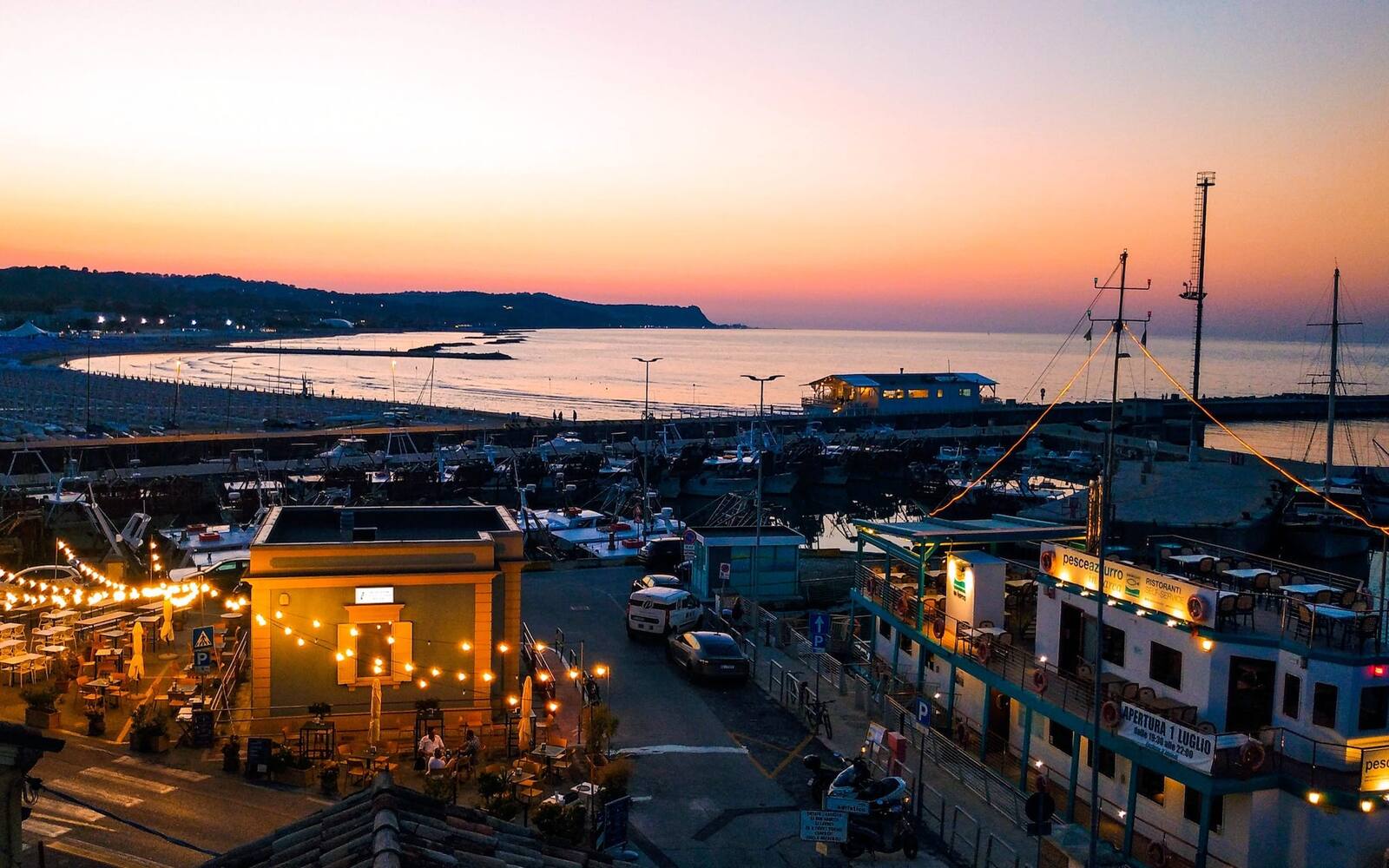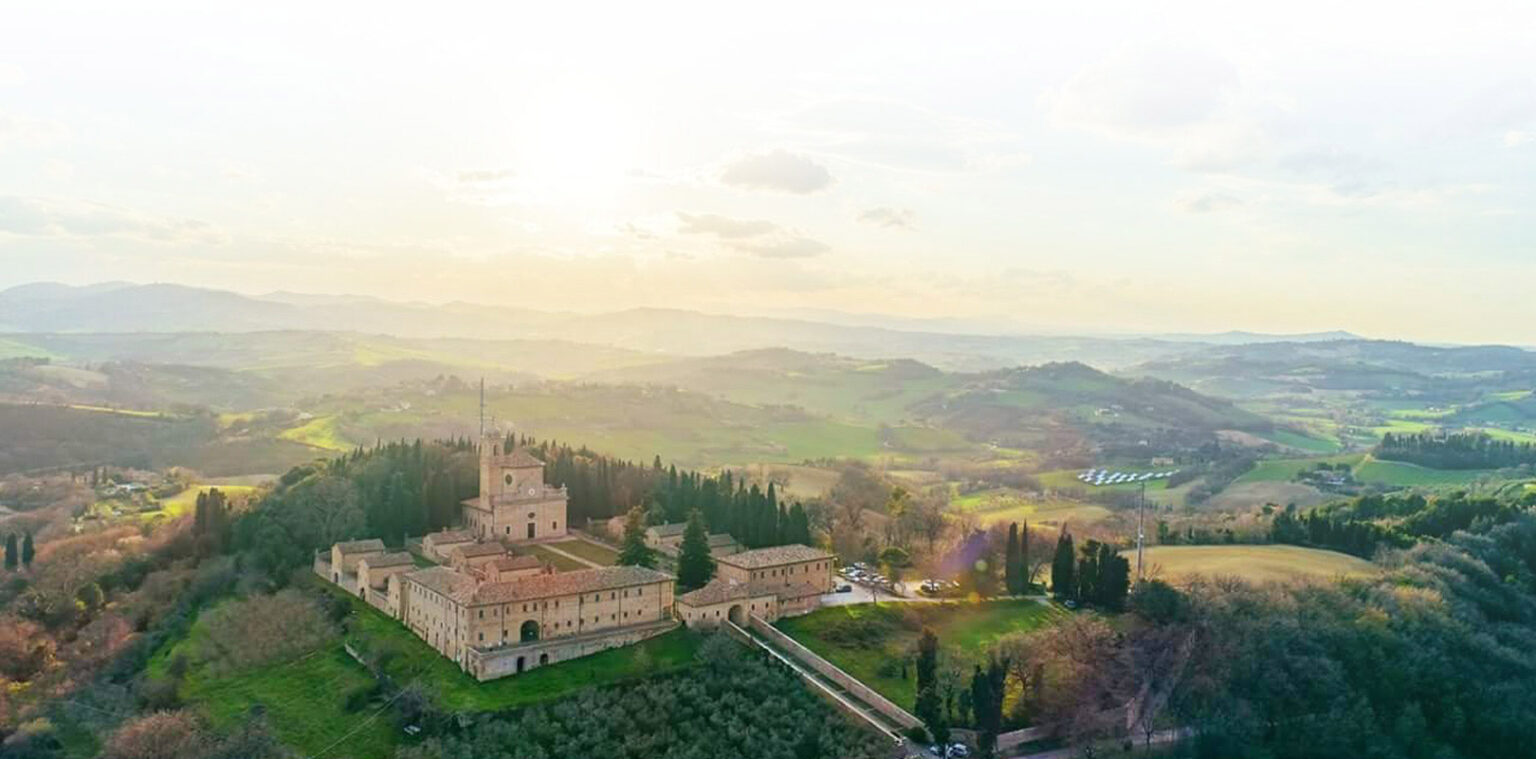Fano e dintorni
Fano, la nostra città Natale è una delle città più belle di Italia.
Monumenti antichi, paesaggi in collina, mare e buon cibo tutto racchiuso in 121 km2
Sarebbe bello dedicarle il tempo che merita per essere visitata
Ma siccome non sempre si ha tempo, vi diamo qualche tips su cosa fare, cosa vedere e dove mangiare...
Perché almeno, una Moretta al Caffe del porto, quando passi per Fano, te la devi fare!
FANO - Fanum Fortunae
Citta' romana, collegata alla capitale tramite la Via Flamina, con partenza dall'Arco di Augusto, al Pincio, è una città con tante bellezze naturali, monumentali e gastronomiche.
Nel centro città, monumenti e antiche chiese sono all'ordine di angolo e spostandoci leggermente fuori è possibile godersi la panoramica della città dall'alto e l'aria fresca del mare Adriatico dal basso
COSA FARE
Quando passi a Fano, la prima cosa da fare è ovviamente venire a trovarci nel nostro ShowRoom!
Ci trovi in Strada Naz Adriatica Sud 44/3, Fano
Cosi intanto ti godi un bel factory tour e poi, se porti il basso o la chitarra,
faremo assieme una consulenza di stile per trovare il miglior abbinamento che fa per te e il tuo strumento!
Poi, o noi direttamente, o tramite questa guida, ti faremo da cicerone per la città!

WHAT TO VISIT
THE CARNEVALE DI FANO
Since 1347, the Fano Carnival has been the sweetest and oldest carnival in Italy.
It takes place annually between February and March.
The first documents of the Fano carnival date back to 1347, regarding the preparation of the "Palio Carnival", although the historian Vincenzo Nolfi places its birth from the reconciliation between the Guelph family of Cassero and the Ghibelline family of Da Carignano, cited by Dante in the Divina Comedy.
The Fano carnival takes place on the three Sundays before the start of Lent which usually corresponds to the beginning of February.
The preparation of the floats
Before the carnival parade, there is preparation work that can last from 4 months to 40 days
The characterizing element of the allegorical floats is satire: in fact, characters or situations with the most popular political or social theme in the given historical moment are represented.
The parade and the costumes
On each of the three Sundays, the floats parade along Viale Gramsci three times.
The first round is the presentation of the floats which, led by the puppet, advance along the avenue accompanied by music and choreography. Once the first round is over, the second begins, "the jet", which attracts the greatest number of people and consists of a parade with the throwing of sweets, chocolates, and sweets from the floats. Finally, there is the most evocative tour, that of the "luminaria".
Accompanying the parade of floats is a procession with various kinds of masks that interact with the public by dancing and dancing, surrounded by stands and carousels scattered throughout the historic center of Fano.
At the end of the third day, to conclude the Carnival, fireworks are launched.
The candy throw
In Fano, during the second round of allegorical floats, it is traditional to throw tons of sweets of all types towards the crowd.
Each wagon has a supply of approximately ten quintals.
For many years there was an agreement with the Perugina sweets manufacturing company, which ensured that many Baci Perugina were launched, which became one of the recurring sweets of the Fano carnival.
In 2015, the "prendigetto" was introduced, i.e. an inverted cardboard cone designed by a middle school teacher from Fano, Paolo Del Signore, which makes the jet safer.
The Pupo
The Pupo is the typical mask of the Fano carnival, and since 1951 it has been the caricature of the most prominent character of the moment.
His name comes from the expressions in the Fano dialect "el pup" and "el vulòn" which comes from the French "nous voulons" which recalls the period of French domination in the 19th century.
Every year all the floats, and in particular the puppet, are renewed to bring the folkloristic and satirical side of the event up to date.
The burning of the puppet is the modern reinterpretation of the ancient rite of the scapegoat led to the altar for sacrifice: in the same way, at the end of the carnival, the Pupo is "sacrificed" on Shrove Tuesday through the flames in Piazza XX Settembre.
The Pupo represented the sacred animal on which the community placed all the collective and individual sins committed during the year, and in particular on the days of carnival.
The burning of the Pupo represents the end of Carnival and the beginning of the period of Lent.
Musica Arabita
The float that closes the procession is the most characterizing one within the Fano Carnival, that of Musica Arabita, which in Fano dialect means angry music.
This wacky and eccentric musical band was born in 1923 and was made up of artisans and shopkeepers. Many members still beat the clock with bizarre tools, such as bins, bottles, jugs, coffee pots, umbrellas, garbage holders, clogs, and much more. The quintessence of the group was maestro Enzo Berardi.
Guido Piovene in the book Viaggio in Italia defines Arabita Music as "Italian Jazz".
This float also contributes to the throwing of sweets.
LE MERAVIGLIE DELLA FANO ROMANA
Oltre mezzo km, intervallate da torrioni cilindrici, le mura storiche di Fano rappresentano un meraviglioso esempio di bellezza architettonica romana.
La prima cosa da fare a Fano è una passeggiata al Pincio e lungo le mura per fermarsi ad ammirare la porta d’accesso alla città. L’arco di Augusto ti aspetta per darti il benvenuto all’ingresso del centro abitato
LA ROCCA MALATESTIANA
La Rocca è sicuramente la testimonianza più interessante del dominio dei Malatesta.
La Rocca fu progettata seguendo i canoni difensivi “a cerchi” dettati da Leon Battista Alberti: all’interno della fortificazione principale vi era un’ulteriore struttura difensiva, la Rocchetta, che inglobava a sua volta il mastio. Rocchetta e il mastio, a loro volta, erano separati dal resto mediante un fossato.
EX CHIESA DI SAN FRANCESCO E LE TOMBE DEI MALATESTA
In pieno centro città si trova una chiesa sconsacrata che ti lascerà senza parole. Per prepararti alla “visita” ti diciamo solo una cosa: la Chiesa di San Francesco ha come soffitto il cielo e come pavimento il prato.
Questo suggestivo monumento privo di copertura ospita oggi, nel sottoportico, le tombe di Pandolfo III Malatesta e della sua prima moglie Paola Bianca. Quest’ultima tomba, in particolare, è un autentico capolavoro di scultura tardogotica, opera dello scultore veneziano Filippo di Domenico.
MARINA DEI CESARI E PASSEGGIATA DEL LISIPPO
E una volta scoperto passo dopo passo il centro storico perché non tuffarsi nel blu della Fano marittima raggiungendo la Marina dei Cesari? Le caratteristiche casette dei pescatori, le spiagge (una di sabbia e l’altra di ciottoli) e tanti ristoranti e lidi ti faranno innamorare al primo passo di questa zona.
Da non perdere poi la Passeggiata del Lisippo, un collegamento su pontile fisso, protetto dagli scogli, che si affaccia direttamente sul mare. Fermarsi li ad ammirare il tramonto con colonna sonora solo le onde del mare è uno spettacolo che non ha prezzo.
EREMO DI MONTE GIOVE
A pochissimi km da Fano nei suoi immediati dintorni troverete l’Eremo di Monte Giove, abitato da 3 monaci Camaldolesi, il luogo incantato garantisce pace e silenzio oltre ad un panorama bellissimo che copre tutta la valle del Metauro per arrivare fino all’apice del Monte Catria.

COSA DEGUSTARE
Avete capito bene, a Fano si mangia e si beve molto bene!
IL BRODETTO, LA MORETTA e LA RUSTITA
• La Moretta fanese.
Secondo la tradizione la Moretta è una bevanda storica che ebbe origine tra i marinai e pescatori del porto di Fano i quali prendevano bevande corrette e molto calde per scaldarsi e rinvigorirsi prima di avviarsi tra le onde del mare.
La Moretta nasce quindi dai rimasugli di liquori avanzati che venivano messi insieme.
Servita a fine pasto e composta da caffè caldo, alcolici e scorza di limone è un vero must per i fanesi.
• Il Brodetto alla fanese.
E' un piatto tipico della tradizione culinaria, una zuppa di pesce che veniva cucinata dai vecchi marinai con pesci poveri, pomodoro e aceto, preparato solo con pesce fresco pescato in Adriatico.
il brodetto è stato così acclamato che ogni anno a settembre si celebra il BrodettoFest, oltre 30 ristoranti aderiscono all’iniziativa di servire il brodetto ad un prezzo convenzionato di € 20 e vengono organizzati show cooking, assaggi, giurie, competizioni e laboratori per i bambini.
• La Rustita.
Il pesce lo potrete trovare in tutte le salse, e tipica è anche la “rustita”,
una grigliata sulla brace di pesci misti impanati con il pane grattugiato.
SEDERSI A TAVOLA
Tra gli storici ristoranti fanesi troverete:
Trattoria Dalla Quinta
La Rustita
Trattoria da Felix
Bar Caffé del Porto
Bar CentralE
LE MARCHE E DINTORNI
Se hai piu di un giorno, ti consigliamo di andare a visitare anche questi posti qui:
> URBINO, città UNESCO e patria di Raffaello
> PESARO, città di Rossini e della Musica
> GRADARA e il castello di Paolo e Francesca
> FABIRANO, Città della Carta
> LORETO, culla della spiritualità marchigiana
> GENGA e il Tempio del Valadier
> LAME ROSSE, Il Gran Canyon delle Marche
> Le Grotte di Frasassi
> CONERO, la Riviera dalle spiagge sorprendenti
> RECANATI, Patria di Giacomo Leopardi
> SAN BENEDETTO DEL TRONTO, la riviera delle Palme
Ti aspettiamo a Fano!
